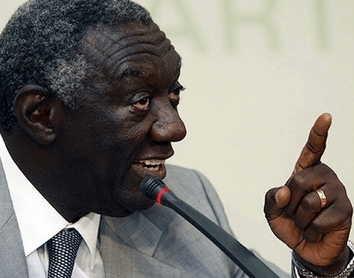
For most businesses, the telephone is often the first contact with existing customers and perhaps the only point of contact with most prospective clients. It can potentially make or break a business relationship.
When customers call a company, they expect an undivided attention. They don’t want to be kept waiting, they need prompt answers and they need to trust the information they receive is accurate. Because first impressions are lasting, and often such first impressions are done over the phone, the customer will make an estimation of the business by how his or her call is handled (from start to finish). When calls are answered professionally, courteously and warmly, a prospective client would likely stop shopping around because he/she has been given a reason and the confidence to do business with you. And it gives existing customers who are happy with your product or service an additional motivation to come back with repeat purchase and referrals.
Apart from face-to-face, a phone call is one of the best ways to get a personal response. If the person or institution called is available, business can be taking care of on the spot saving a significant amount of time and money. Additionally, phones require minimal literacy or numeracy for basic use which means that unlike other forms of communication such as emails, text messaging, live chats or social media, virtually anyone can make or receive phone calls without much hassle. That is why acquiring telephone is one of the basic and most important requirements for setting up and running successful businesses. Unfortunately, many organisations in Ghana; including private, government and non-governmental organisations still struggle to make this work to their advantage and to the convenience of their clients. On a daily basis, people waste precious time in traffic and queue for long hours in many establishments just to acquire information and services they could have easily accomplished at the comfort of their homes and offices simply because of poor corporate telephone practices. Without credible data, it’ll be very challenging to effectively improve on the situation and learn from best practices.
The Banking Industry Telephone Efficiency Index (THE BITE INDEX) survey was designed and implemented by Walsbridge, an independent market research and business intelligence firm, to provide sound data to measure and benchmark corporate telephone practices in the banking industry. And to provide insights to help other organisations to significantly improve corporate telephone handling skills to match international best practices. The research acknowledges other portals for service and information acquisition such as websites and other e-banking platforms. These portals provide alternative access to existing and prospective clients to access products and service as far as permissible.
Methodology
Using telephone mystery shopping technique, quantitative data was collected over a seven-month period from 211 branches selected from 23 commercial banks. The main categories that were investigated were: Response Rate, Telephone Handling Etiquette, Product and Service Presentation, Pricing Information Consistency, Overall BITE.
What percentage of phone calls was answered? 21per cent; 42 per cent No answer and 37 per cent Other obstacles.
The call response rate is the percentage of calls successfully answered by the intended recipients. This rate is important because high response rate suggest that the telephone numbers were: Correct or valid; Connected at all times; Answered when it rings; Answered by the right branch or person; and Answered by an answering machine and successfully transferred to the right person, branch or department.
The response rate suggests that prospective (and existing) clients that do not have direct access to relationship managers, bank staff or other reliable means of communicating directly with their branches, have only two out of 10 chances of getting through to their preferred branch using official telephone lines. It this situation may be actively contributing to excessive queuing in banking halls. The banking institution with the highest response rate scored 53 per cent. The research findings have significance beyond the banking industry; to the extent that the index could be indicative of the prevailing service and professional standards in the country.
Seventy-nine per cent of phone calls are likely to experience one of more of the following responses: No answer; Answered by wrong persons and/or wrong branches; Invalid telephone number (numbers that are more or less than 10 digits) ; Ring and disconnects almost instantaneously; Answered by answering machines that persistently fail to transfer calls; Number does not exist; Constantly busy; Switched off or out of coverage area etc.
Why are calls not being answered?
Apart from some of the technical challenges that can clearly be attributed to poor services form telephone service providers, a significant percentage of calls that connect were ignored. Even though the research did not sought to explain why? One of more of the following theories may apply.
i.Indifference: Situations where staff become comfortable ignoring inbound calls simply because they can do so without any consequences.
ii.Lack of effective monitoring system: Without effective monitoring system it is nearly impossible for organisations to know how bad the situation is or how many times prospective customers have to try to get through to their preferred branches on phone.
iii. Lack of dedicated staff to inbound calls: Most of the time simple problems require simple solutions. When a phone rings somebody must answer it. Not because he/she has nothing else to do but because it is his/her responsibility to do so. Many organisations treat inbound calls as secondary and therefore do not have dedicated staff to attend to them.
iv. Obsolete service protocols: Phone calls may not be answered because client service executives are busy attending to walk-in clients and many institutions have standard protocols that indicate that walk-in clients take precedence over phone-in clients. This is evident in the results of this survey where 16 per cent of surveyed branches informed the research team that they were busy attending to walk-in clients and therefore the caller should call back later or come to the banking hall for the information. There’s no justifiable reason why clients accessing information via telephone should compete with walk-in clients.
In addition to the response rate, the research also benchmarked best practices and challenges regarding telephone etiquette (including call transfer and holds), Product & Service Presentation, Pricing Information Consistency, the overall BITE INDEX.
The detailed findings by Walbridge Ltd. will be presented at the launch on Tuesday, 11th April, 2017.
Without credible data, it’ll be very challenging to effectively improve on the situation and learn from best practices.
For most businesses, the telephone is often the first contact with existing customers and perhaps the only point of contact with most prospective clients. It can potentially make or break a business relationship.
When customers call a company, they expect an undivided attention. They don’t want to be kept waiting, they need prompt answers and they need to trust the information they receive is accurate. Because first impressions are lasting, and often such first impressions are done over the phone, the customer will make an estimation of the business by how his or her call is handled (from start to finish). When calls are answered professionally, courteously and warmly, a prospective client would likely stop shopping around because he/she has been given a reason and the confidence to do business with you. And it gives existing customers who are happy with your product or service an additional motivation to come back with repeat purchase and referrals.
Read Full Story


















Facebook
Twitter
Pinterest
Instagram
Google+
YouTube
LinkedIn
RSS